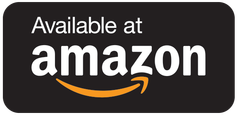I Miss Bannock Manor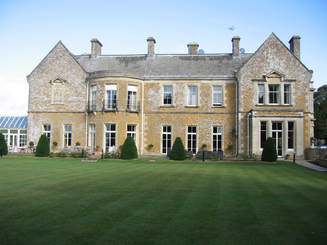 English Manor Home English Manor Home I spent so many hours thinking about Bannock Manor, wandering through the rooms and visualizing myself there that it became real to me. I have the floor plan firmly planted in my brain. I know that when you walk through the front door you are immediately in the grand foyer, the staircase is in front of you, the kitchen off to the right, the main public rooms to the left. In my mind, I can still smell the wood paneling, tread softly on the Persian carpets, and caress sofa pillows that were embroidered by long gone ancestors. Oh, the books, how I love the books. More than I could read in a lifetime.  In bed at night, when sleep eludes me, I picture ten inch crown moldings and crystal chandeliers, hot tea in antique Spode, and beautiful views out ancient windows. Meandering along those corridors is a great antidote to insomnia; there is so much to see and think about. Eventually, after a rather pleasant jaunt, I drift into a room that leads to dreamland.  Over the course of two decades I have made many trips to Great Britain and on every occasion I have explored old manor houses. I am passionate about them, and have lost count of how many I have seen. Certainly more than one hundred. Some, like Chatsworth House or Hadden Hall, I’ve been to several times. I am ever so grateful to the National Trust for preserving these magnificent homes for dreamers like me.
Birds of a FeatherWriting is a solitary process, and most writers crave alone time. We treasure those moments when we can dream, muse, think and create. As I set these words on paper, I’m alone, and yet most of my writing involves research, and re-writing. Completing a novel takes a surprising amount on input from a lot of different people. Deborah and I were lucky. To research The Chamber And The Cross, we traveled to England and explored castles, manor houses and historic battlegrounds. On a separate trip, Deborah stayed in several manor houses and interviewed the owners. People opened up their private rooms and attics, the places that guests don’t normally see, so that we could write those details into the book. The firsthand information we gained made the scenes more realistic and believable. Every week, Deborah and I share our work with a group of other writers. We’ve been doing this for years, and after we hear their comments and suggestions, we rewrite, restructure, and polish the scenes again. The input they give us helps us decide what stays in, and what gets cut. We also learn by listening to others read. Chances are, whatever mistakes they’re making are the same ones we’ve made – or are about to make. Whatever stage of the process we’re in, someone else has experienced it too. It’s like being in an exercise group – you have to do your own work, but you can take comfort and inspiration in the fact that others are sweating it out alongside you. 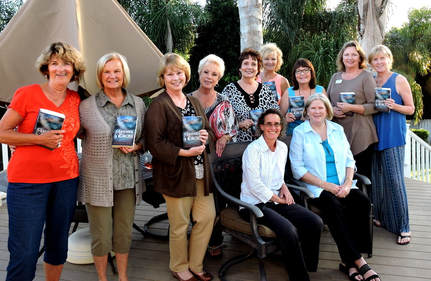 One of the interactions we enjoy most is the connection we share with our readers. Recently we were invited to spend an evening with a special book club, The Finches, for dinner and a discussion of The Chamber And The Cross. The Finches are well-read, well-traveled, and they welcomed into us into their group with open arms. We felt right at home. As we showed slides from our research trips, they were able to see the rooms and gardens that became the settings for our scenes. From drawing rooms to libraries, great halls to medieval kitchens, they could compare what we had described with what they envisioned as they read the book. 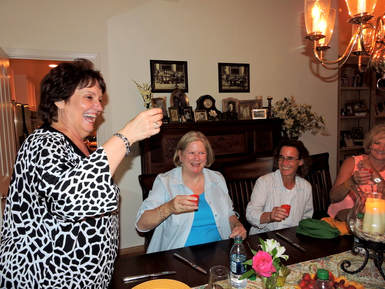 And the Finches were full of questions. Who was Oliver, and how did he get into the house? Are we going to tell more of Lorraine’s story in a sequel? How did we decide to structure the book the way we did, with both present and past sections? Yes, there are plans to tell more of Lorraine’s life in a sequel. Oliver was a distant relative; there are clues. And the structure was decided through much trial and error! A discussion like this is more than just Q and A. Talking with readers is an opportunity to learn new things about our book. It’s like going behind the scenes in a manor house – a chance to discover a treasure trove of information. We learned that no detail is too minor. Anglophiles love picturesque descriptions of homes and villages. The Chamber And The Cross is a hefty five hundred pages, but at the end of the book, our readers wanted to know even more. We were able to tell the Finches about some of the characters and relationships that we had pared down, and they told us what they wanted to hear more about when we finally write the sequel. Whatever comes next, one thing is for sure. Just as we incorporate research and critique into each draft, our next book will be shaped by what our readers tell us. They are as much a part of the writing process as pen, paper and laptop. We are delighted to share our words, and to learn from our readers. Thank you, Finches! Book ClubsLast week Lisa and I were guests at two different San Diego book clubs who had read The Chamber and The Cross. One was in University Heights and the other in Scripps Ranch. At both events they started with wine and appetizers, chatted and caught up with each other’s lives. Then there was a full dinner. One group served English cheeses for the appetizer, Bangers and mash for dinner, and Trifle for dessert. A good old English menu added to the atmosphere.  Bannock Manor Prototype for The Chamber and the Cross Bannock Manor Prototype for The Chamber and the Cross These are both long term groups who have been meeting monthly to talk about books for many, many years. They had lots of questions about our joint writing process, who wrote which scenes (we both worked on all scenes), and character development. It was fun to hear people talk so enthusiastically about our characters. Bannock Manor, a medieval manor house, is the main setting, and the ladies wanted to know whether it was a real house. No, Bannock Manor is a composite of numerous English manor homes.  Bannock Manor Prototype for The Chamber and The Cross Bannock Manor Prototype for The Chamber and The Cross Over the last twenty years I’ve visited over a hundred such homes in England. I love studying the leaded glass windows, giant door hinges, crown molding, attic rooms, cellars, massive private libraries, and walled gardens. Of course, that’s just a small sampling of the features I find fascinating about Europe’s historic homes. And because I admire early craftsmanship, it was easy to describe the house in detail. It was certainly rewarding getting to share our writing journey with our readers. If you know anyone who is in a book club in the southern California area, Lisa and I would love to meet with them too. You can contact me through FaceBook or our Email. Does Your Scene Pop?Writing a novel is a lot like home decorating. The blank page is like an empty room, like a white wall. My natural instinct when I sit down to write is to try anything – just get words on paper. This is not a good strategy for home decorating. Or writing. What connects one scene to the next is the plot, driven by each character’s conflicting motivations. Because I just moved, I’ve learned that what connects one room to the next is color. A color palette. Deborah, my co-writer, introduced me to this concept while we were at Bed, Bath & Beyond.
There’s this word that writers and decorators use. Pop. As in: Let’s make that character, or that color, pop. The idea is that everything is part of a blended whole, and yet one thing draws the eye and captures the attention. When the right color pops, the room looks vibrant. When the right character pops, a scene comes to life. To make this work, the decorator and the writer know that the person viewing a room, and the person reading a novel are engaged at several levels all at once. The surface, the predominant color or plot, is what your eye lands on first. Then you begin to absorb the stuff beneath the surface, like subplots and accent colors. And then there’s the character that can’t be ignored, the unexpected plot twist, the color that pops in a way that delights and surprises. It makes people look for more. Good writing, like a well-coordinated room, is complex, using layers of color and texture. This doesn’t come naturally to me. My instinct is to keep putting words on paper and shoving them around, the way you move furniture when you’ve bought things on a whim. Nothing really fits, but you’re going to make it work. Keep moving the sofa; maybe it will look better on the other side of the room. Keep rearranging the scenes – if each individual word, each sentence, each plot point is good, then eventually the whole thing will turn into a book. Or not. Smart shoppers bring a tape measure to the store. Deborah (a Realtor) keeps an industrial strength one in the trunk of her car. People who know how to decorate keep the whole home in mind. In addition to the color that pops, they use the same colors and similar textures to create a flow throughout the home. What happens is that the body, the psyche, and the emotions are drawn seamlessly from one room to the next. When it’s done correctly, it is sensed subconsciously. In a well-written novel, the plot and the subplots work like fabric and patterns, capturing the mind and emotions and pulling them through each scene. Ideally, the reader becomes submersed in and feels at home in the story. They have a satisfying sense of it had to happen that way, and yet they feel surprised and delighted by those characters that pop and come alive. Writing a book takes a lot longer than decorating a house. The characters get bossy. They wake up on the page and have their own opinions. This is like the sofa suddenly deciding for itself that it wants to go under the window. And it makes you move it. In a room, accent colors are useful because if you get tired of the way things look, you just swap out the pillows. Voilà! Same palette, but something else pops. But in a book, you can’t just toss another character into the scene the way you casually add a cushion, because that can change EVERYTHING. In The Chamber And The Cross, right up until our very last draft, we had a nebulous intruder who threatened Laura in a vague way. He was always off-stage, and we were never really sure who he was. Some kind of vagrant, probably a guy with a drug problem. Dangerous, but not specific. Then Deborah made him pop. She gave him a name: Oliver. She gave him a reason for being in the story: he wants what Laura has. Suddenly the plot took a very creepy twist. Like good decorators, we shifted and moved other characters and scenes, and basically re-measured and restructured the book. That final rewrite took a long time. We weren’t just painting a room; we were rebuilding the story from the foundation. The book took so long to write that we doubted we would do a sequel – until our readers demanded one. This time we’re planning ahead, working out the plot and creating our book’s color palette. This time, all the subplots will match. Our characters will pop, look good in their scenes and know exactly where they fit into the story. I’m certain of this the way I’m certain that I never want to make another change to my décor. Oops – gotta go – Deborah has more coupons for Bed, Bath & Beyond. Scenes Should Work Hard |
AuthorsBlog site for authors Deborah K. Reed and Lisa K. Shapiro - Co-Authors of The Chamber And The Cross. Archives
February 2016
Categories
All
|
Where to PurchaseSite photography by Deborah K. Reed.
Poetry by Lisa K. Shapiro © 2014 by Deborah K. Reed and Lisa K. Shapiro. All Rights Reseverved. |
|
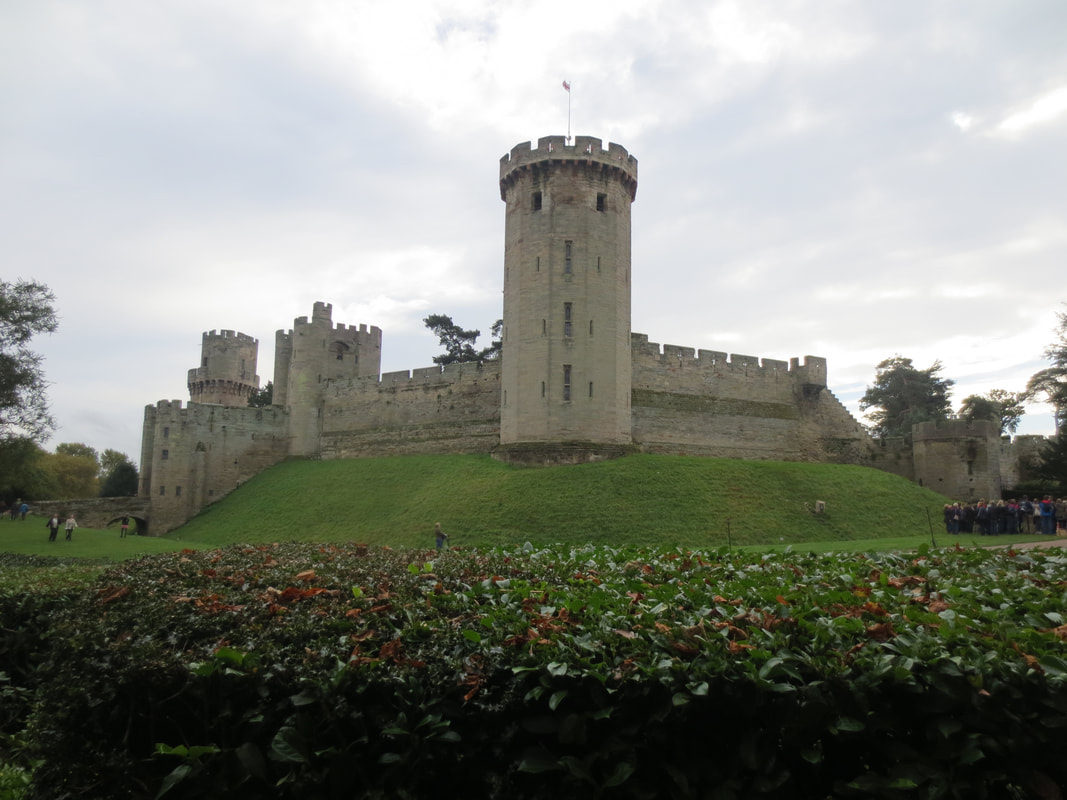
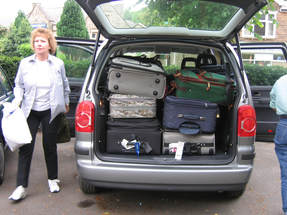

 RSS Feed
RSS Feed
